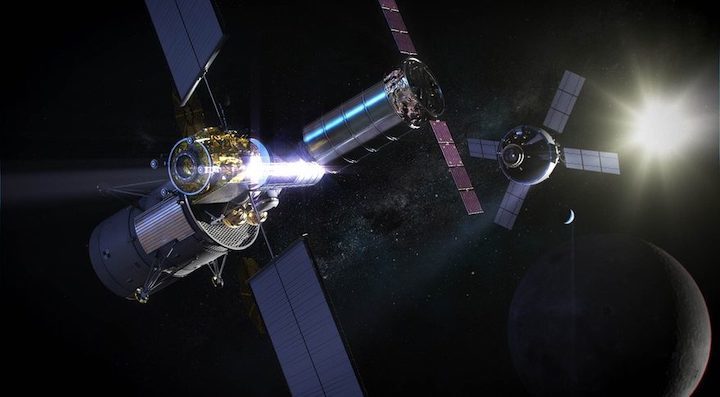31.08.2019

WASHINGTON — NASA’s partners in the International Space Station remain committed to participating in the lunar Gateway despite changes to the program earlier this year that could delay their contributions to the outpost.
In an Aug. 28 statement, members of the station’s Multilateral Coordination Board (MCB), which includes the five space agencies involved in the ISS, said the Gateway is “a critical next step” in human space exploration and that they plan to contribute modules or other elements for the facility in lunar orbit.
“Looking to exploration activities beyond LEO, the MCB members reaffirmed their continued intention to cooperate on a human outpost in the lunar vicinity – Gateway,” the document, a summary of the board’s Aug. 6 meeting, stated. “Within a broader open architecture for human exploration, the MCB acknowledged the Gateway as a critical next step.”
The board offered a similar endorsement of the Gateway at a March 5 meeting. The statement from that meeting included a diagram of one Gateway configuration, with contributions from Canada, Europe, Japan and Russia, as well as the United States, identified.
Three weeks after that meeting, though, Vice President Mike Pence announced at a meeting of the National Space Council that the U.S. would speed up its lunar exploration timeline, seeking to land astronauts on the moon by 2024, rather than prior plans for a 2028 landing. NASA subsequently said that it would initially pursue a minimal Gateway needed for that 2024 landing, deferring full-fledged development of the Gateway for a second phase intended to enable “sustainable” lunar exploration in the second half of the 2020s.
That minimal Gateway will include just the Power and Propulsion Element, which will generate power for the Gateway and provide electrical propulsion, as well as a “mini-hab” module NASA now calls the Habitation and Logistics Outpost (HALO). NASA awarded a contract to Maxar Technologies in May to develop the Power and Propulsion Element, and in July announced its intent to award a sole-source contract to Northrop Grumman for HALO after determining that company was the only one that could have a module ready in time to support a 2024 landing mission.
Those two modules, along with the Space Launch System and Orion vehicles and lunar landers, “will help enable the Artemis program’s plans for a 2024 human lunar landing mission and ensure compatibility and technical capability for the Gateway partnership,” the statement concluded.
Other ISS partners, though, remain interested in providing elements for the Gateway’s later phase, the statement added. “The MCB members shared the view that the Gateway will become a sustainable exploration infrastructure supporting further lunar and Mars exploration objectives when additional capabilities are provided through the Gateway partnership.”
Canada, which announced in February it would develop the Canadarm3 robotic arm system for the Gateway, continues to pursue work on that, awarding contracts in August for initial studies of the arm’s design. The statement noted that Japan is studying potential “habitation functions and logistics resupply” capabilities for the Gateway, and Roscosmos is planning a multipurpose airlock module. The European Space Agency will decide at its November ministerial meeting what roles it will play in the Gateway, which may include a habitation module, communications and refueling capabilities, and a science airlock.
The statement didn’t identify what additional elements NASA would provide for the Gateway in this later phase. In addition to the two initial elements, NASA issued a call for proposals Aug. 16 for commercial logistics services for the Gateway, modeled on the commercial cargo program for the ISS. Some in industry expect NASA to pursue development of a full-sized habitation module to supplement HALO and any international partner habitats.
“The partnership will coordinate to ensure Gateway development continues in a timely manner to realize near and long-term goals, prepare for early utilization activities on Gateway, and consider opportunities for further cooperation related to lunar surface exploration – leading to the exploration of Mars,” the statement concluded, but didn’t give a schedule for Gateway development beyond the initial capabilities needed for the 2024 landing.
Quelle: SN

